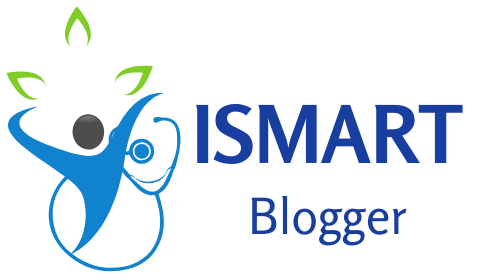Career Advancement: Tactical Goal Setting Guide
Unlock your career advancement potential with a tactical approach to goal setting. Learn the art of SMART goals, self-assessment, and overcoming obstacles.
Introduction
Success in any endeavor requires a clear direction, a focused mindset, and unwavering determination. In the realm of professional development, goal setting serves as the compass that guides individuals towards their desired career advancement. It is an art form that harnesses ambition, strategic planning, and the power of intention to unlock one’s full potential in the professional sphere.
“The future belongs to those who believe in the beauty of their dreams,” said Eleanor Roosevelt. Goal setting is the initial step towards transforming dreams into reality.
It involves defining objectives and outlining actionable steps necessary to accomplish them. As we embark on this journey of understanding goal setting for career advancement, let us delve into its essence, significance, and how it can propel individuals towards achieving their professional aspirations.

Definition of Goal Setting
Goal setting can be defined as a deliberate process whereby individuals identify specific targets they seek to achieve within a designated timeframe. These targets are not merely vague desires or fleeting wishes; rather, they are concrete objectives that provide clarity and direction for one’s career journey. An essential aspect of effective goal setting lies in making these objectives tangible and measurable.
By employing the SMART (Specific, Measurable, Achievable, Relevant, Time-bound) framework developed by George T. Doran in 1981, individuals can craft goals that are more than just abstract notions but instead become actionable plans for success. “A goal properly set is halfway reached,” said Abraham Lincoln.
This quote encapsulates how goal setting serves as the catalyst required to propel individuals forward on their path to success. Without well-defined goals, professionals may find themselves adrift in a sea of ambiguity with no clear destination or purpose.
Importance of Goal Setting for Career Advancement
Goal setting plays a pivotal role in career advancement by providing a roadmap for growth, focus, and achievement. It empowers individuals with the ability to envision their future and identify the necessary steps to turn their aspirations into reality. One of the primary benefits of goal setting is its ability to foster motivation and drive.
When individuals have specific objectives in mind, they are more likely to be energized and dedicated in their pursuit of professional development. Goals serve as beacons that inspire individuals to push beyond their comfort zones, overcome obstacles, and embrace challenges head-on.
In addition to fueling motivation, goal setting enhances clarity and focus. By defining objectives clearly, professionals can align their efforts towards meaningful tasks that hold significance for their career advancement.
This focused approach eliminates distractions and allows individuals to invest their time and energy efficiently. Furthermore, goal setting encourages personal growth by fostering a continuous learning mindset.
As professionals strive towards achieving targets, they often acquire new skills, broaden their knowledge base, and hone existing talents. This commitment to self-improvement not only enhances employability but also opens doors for new opportunities.
Understanding the Basics of Goal Setting
SMART goals: Specific, Measurable, Achievable, Relevant, Time-bound
Setting goals is a fundamental practice that propels individuals towards success. However, not all goals are created equal.
To maximize the effectiveness of goal setting for career advancement, it is crucial to follow the principles of SMART goals. Each letter in SMART represents a key aspect that ensures clarity and focus in goal formulation.
Specificity is the foundation of a well-defined goal. When setting career objectives, it is essential to be specific about what you aim to achieve.
For instance, instead of saying “I want a promotion,” specify “I want to become a senior manager within my department.” This specificity provides clear direction and increases motivation. Measurability allows for tracking progress and assessing achievements.
Defining measurable criteria enables you to quantify your progress towards the desired outcome. For example, setting a target like “I will increase my sales by 20% within six months” makes it easy to track your performance and determine if you are on track.
Achievability refers to setting goals that are realistically attainable based on your current skills and resources. While aiming high is encouraged, it’s crucial not to set impossible or overly ambitious targets that may lead to frustration or demotivation.
Consider your capabilities realistically when formulating your career advancement goals. Relevance ensures that your goals align with your long-term aspirations and overall career path.
It is essential to evaluate whether achieving these particular objectives will contribute positively towards reaching your ultimate career destination. Time-bound ensures that there is an established timeframe within which you aim to accomplish each goal.
Without time constraints, there can be a lack of urgency and accountability in pursuing objectives. Setting specific deadlines helps maintain focus and enables effective planning.
Differentiating between short-term and long-term goals
When crafting career advancement goals, it is crucial to differentiate between short-term and long-term objectives. Short-term goals are those that can be accomplished within a relatively brief period, typically ranging from a few weeks to a year. These goals serve as stepping stones towards achieving long-term aspirations.
Short-term goals contribute significantly to long-term success by providing a concrete roadmap for progress. By breaking down larger, more complex objectives into smaller, manageable tasks, you create a sense of accomplishment and build momentum in your career journey.
For example, if your long-term goal is to become a senior executive in your organization, some short-term goals may include attending leadership workshops or gaining experience in cross-functional teams to broaden your skillset. These short-term goals not only enhance your knowledge but also demonstrate initiative and dedication towards reaching the ultimate objective.
Moreover, short-term goals allow for more frequent evaluation and adjustment. As you progress through shorter milestones, you have the opportunity to reassess and fine-tune your approach based on the learnings and experiences gained along the way.
This flexibility ensures that you remain adaptable and responsive to changes in the industry or shifts in personal circumstances. Understanding the basics of goal setting involves embracing SMART principles while differentiating between short-term and long-term objectives.
Employing specificity, measurability, achievability, relevance, and time-bound aspects creates a solid foundation for effective goal formulation. Additionally, recognizing the role of short-term goals as essential building blocks towards long-term success empowers individuals with focus and motivation on their career advancement journey.
Identifying Career Objectives and Aspirations
Before embarking on the journey of goal setting for career advancement, it is essential to have a clear understanding of your career objectives and aspirations. Self-reflection and assessment of your current skills and interests play a crucial role in this process. Take the time to introspect and identify what truly motivates you, what aspects of your work bring you joy, and where you see yourself in the future.
One effective tool that can aid in this self-assessment is the SWOT analysis. SWOT stands for Strengths, Weaknesses, Opportunities, and Threats.
By conducting a SWOT analysis, you can gain valuable insights into your strengths (skills, knowledge), weaknesses (areas for improvement), opportunities (potential growth areas in your industry), and threats (potential challenges or obstacles). This analysis helps you understand how your current skill set aligns with your career objectives and allows you to identify areas where further development may be necessary.
Setting Realistic Career Objectives based on Personal Aspirations and Market Trends
Once you have completed a thorough self-assessment using tools like SWOT analysis, it’s time to set realistic career objectives that align with both your personal aspirations and market trends. While it’s important to dream big, it’s equally crucial to ground those dreams within the realm of possibility.
Consider both short-term objectives that contribute to long-term success as well as overarching goals that shape the trajectory of your career. Short-term goals allow for measured progress while keeping sight of the bigger picture.
For example, if becoming a manager is an ultimate objective, short-term goals could include acquiring specific leadership skills or completing relevant training programs. In addition to personal aspirations, researching industry growth potential and job market demands is vital for setting realistic objectives.
Stay abreast of emerging trends in your field, understand the skills that are in high demand, and assess how your objectives align with these market trends. By aligning your goals with the needs of the industry, you increase your chances of career advancement and success.
Researching Industry Growth Potential and Job Market Demands
Researching industry growth potential and job market demands is a critical step in setting realistic career objectives. By understanding where the industry is headed, you can anticipate changes, identify emerging opportunities, and position yourself for success. Investigate industry reports, market analysis, and forecasts to gain insights into the future growth potential of your chosen field.
Look for sectors that are projected to expand or experience increased demand for specific skills. This research will help you identify areas where you can focus on acquiring new skills or gaining expertise.
Additionally, keep a close eye on job market demands to align your objectives with market needs. Identify roles that are currently in high demand or expected to be in the future.
Determine if there are any gaps between your current skill set and what employers are seeking. This knowledge will empower you to set goals that enhance your employability and set you apart from other candidates.
Section IV: Breaking Down Goals into Actionable Steps
Determining the necessary skills and knowledge required for career advancement
When it comes to setting goals for career advancement, one of the crucial steps is identifying the skills and knowledge needed to reach your desired position. Take some time to research the job requirements, industry trends, and advancements in your field. This will give you a clear understanding of the skills that employers value and seek in candidates.
Look at job descriptions, talk to professionals in your industry, and consult relevant resources such as trade publications or online forums. By determining these necessary competencies, you can create targeted goals that address any skill gaps you may have.
Exploring relevant certifications or educational programs available
In today’s competitive job market, continuous learning is essential for professional growth. Look into certifications or educational programs that align with your career goals.
These can provide you with specialized knowledge and credentials that will enhance your qualifications. Research reputable institutions or organizations that offer these programs and evaluate their curriculum as well as accreditation status.
Consider whether these certifications or educational programs are recognized by employers in your industry. By investing in relevant certifications or education, you demonstrate commitment to self-improvement while simultaneously increasing your market value.
Creating a timeline with milestones to track progress towards goals
To effectively achieve your career advancement goals, it is vital to break them down into smaller milestones and create a timeline for completion. Start by outlining major steps required to reach each goal along with estimated timeframes for each step based on realistic expectations.
For example, if your goal is to become a senior manager within five years, you might set milestones such as obtaining a leadership certification within two years and gaining experience managing cross-functional teams within three years. By setting these milestones along with corresponding dates, you establish a clear roadmap towards achieving your larger objectives.
Setting deadlines for each milestone is equally important. Deadlines provide a sense of urgency and keep you accountable.
Be realistic when setting these deadlines, considering your current commitments and the complexity of each milestone. Regularly evaluate your progress against these deadlines, adjusting them if necessary to accommodate unforeseen circumstances or new opportunities that may arise.
Section V: Overcoming Challenges in Goal Pursuit
Identifying potential obstacles that may hinder progress
While pursuing career advancement goals, it is essential to anticipate and identify potential obstacles that may stand in your way. Common challenges include time constraints, lack of resources or support, and external factors such as economic downturns or industry changes. Recognizing these challenges allows you to develop proactive strategies to overcome them effectively.
Developing strategies to overcome challenges
To successfully navigate the challenges encountered on your career advancement journey, it is crucial to develop specific strategies tailored to each obstacle. For instance, if time constraints are an issue, employ effective time management techniques such as prioritization and delegation.
Seek support from mentors or industry professionals who can guide you through difficult situations and offer valuable insights. Additionally, staying updated on industry trends is critical for adapting to external factors like economic downturns or technological advancements.
Embrace lifelong learning by participating in webinars, attending conferences, or joining professional networks. By remaining well-informed about emerging trends in your field, you can adjust your goals accordingly and seize new opportunities that arise.
Section VI: Monitoring Progress and Adjusting Goals as Needed
Regularly reviewing
To ensure continued progress towards your career advancement goals, regular review sessions are indispensable. Schedule designated times – weekly or monthly – to assess your progress objectively against the milestones set earlier.
Reflect on accomplishments made thus far while identifying areas where improvements are required. During these review sessions, evaluate whether your goals are still aligned with your aspirations and the evolving demands of your industry.
Assess any changes in market trends or personal circumstances that may necessitate adjustments to your goals. By regularly reviewing and adapting, you ensure that your goals remain relevant, realistic, and achievable.
Conclusion
Goal setting for career advancement requires a tactical approach that involves breaking down goals into actionable steps, overcoming challenges along the way, and monitoring progress while allowing for adjustments when necessary. By determining the necessary skills and knowledge required for career advancement and exploring relevant certifications or educational programs available, you equip yourself with the tools needed to succeed.
Creating a timeline with milestones and setting deadlines ensures accountability and helps maintain focus. Additionally, by identifying potential obstacles hindering progress and developing strategies to overcome them effectively, you can navigate challenges successfully.
Regularly reviewing your progress against set goals allows for reflection and adjustment as needed. Embrace this purposeful approach to goal setting, let it guide you on your path to career advancement with confidence. Remember that every step forward brings you closer to reaching new heights in your professional journey. So stay determined, embrace opportunities for growth, and celebrate each milestone achieved along the way!





